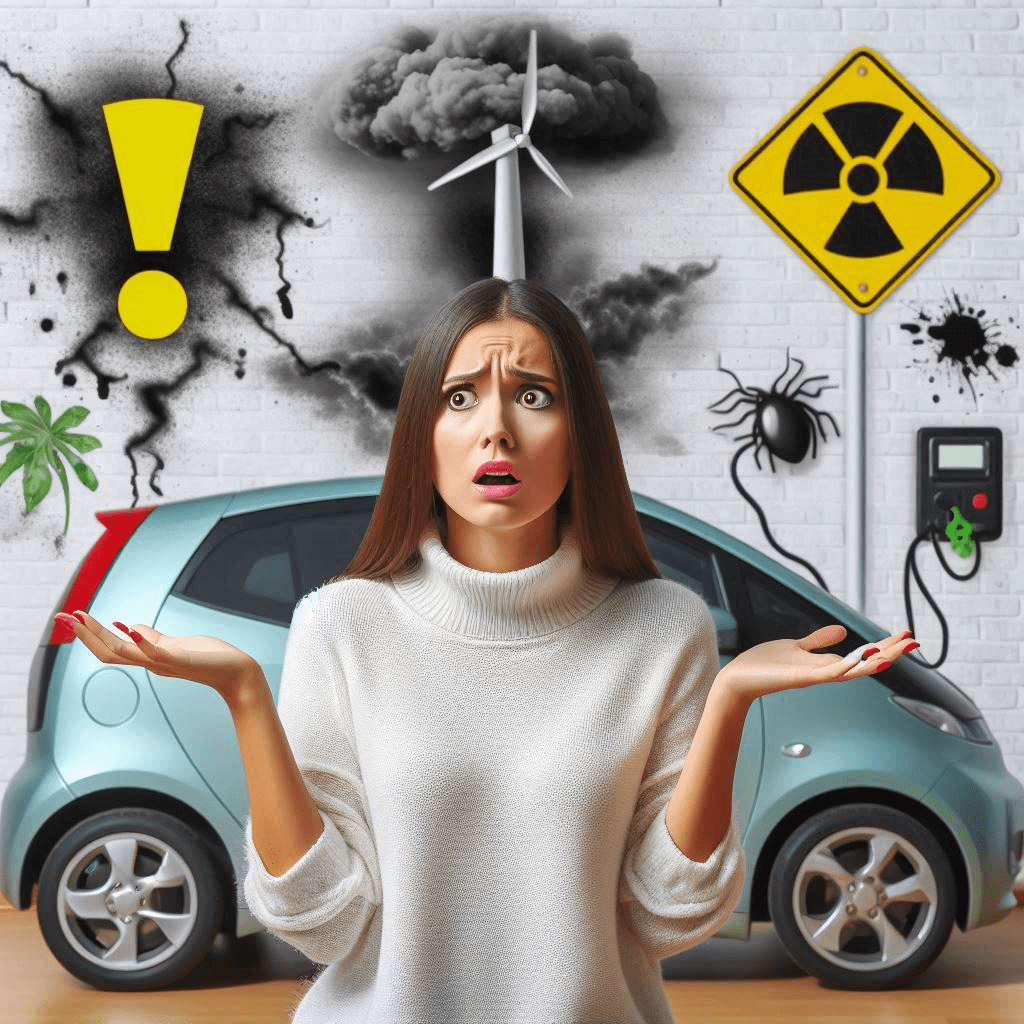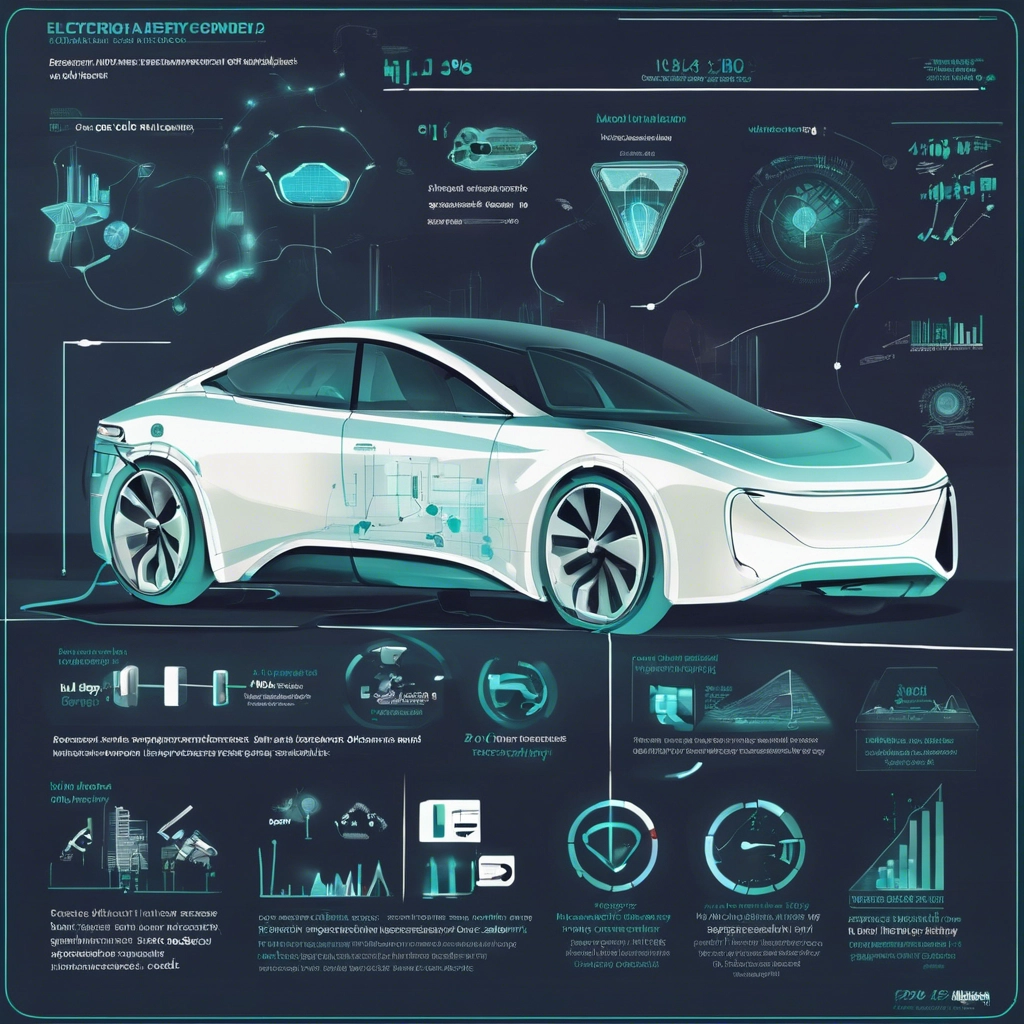Myth: EVs cause dangerous radiation
- “You mights as well hug a microwave!”
- “You might as well live in a microwave!”
- “EVs are so dangerous you could fry an egg on the charger”
Myth Busted: EVs generate lower levels of radiation than many other items in common use
Of course EVs emit radiation. What doesn’t these days? Your mobile phone, WiFi, fossil fuel cars, airline travel, walking down the street, sunlight. All these things and activities expose us to some level of radiation.
So just how dangerous is an EV? Well, I’m more concerned about my mobile phone, my laptop or my home WiFi, because each of these things emit higher levels of radiation than my EV. Given that I’m not really concerned about the mobile phone, that should give you a pretty good idea of how concerned I am about my EV.
The details: EVs emit radiation at lower levels than many objects you probably carry with you all day.
There’s a persistent myth that electric vehicles are “radiation boxes” that pose health risks, but this claim is unfounded. You may have heard concerns about radiation emissions from EVs, but multiple studies, including those from reputable organizations, confirm that these vehicles emit radiation levels far lower than the safety limits. In this post, we’ll explore the facts surrounding radiation exposure from electric vehicles, helping you feel confident in your choice to drive clean and green without concerns for your health.
Understanding Electric Vehicles
While concerns about radiation exposure from electric vehicles are common, it’s necessary to grasp the foundational technology behind these innovative cars to fully understand their safety profile.
The Basics of Electric Vehicle Technology
Technology in electric vehicles primarily consists of motors and batteries, which replace the traditional internal combustion engine and fuel tank. EVs utilize a battery to store energy, which powers the electric motor to propel the vehicle. This shift not only minimizes greenhouse gas emissions but also contributes to a quieter driving experience.
Types of Electric Vehicles
One of the fascinating aspects of EVs is their classification into various types, each with unique features. Below is a table summarizing the main types of electric vehicles:
- BEV – Battery Electric Vehicle
- HEV – Hybrid Electric Vehicle
- PHEV – Plug-in Hybrid Electric Vehicle
- FCEV – Fuel Cell Electric Vehicle (Hydrogen)
Different types of electric vehicles satisfy diverse needs and preferences. Each has its advantages, from zero-emissions driving with BEVs to the extended range of hybrids. You may find that the right choice depends on your daily driving habits and access to charging infrastructure. Knowing the differences between these types will help you make informed decisions.
Components of EVs that May Emit Radiation
For those concerned about radiation, it’s important to identify the components in electric vehicles that might emit radiation. These include electric motors, battery packs, and electronic control systems, which operate utilising electromagnetic fields.
Vehicles equipped with high-capacity battery packs and electric motors generate electromagnetic fields when in use. While these emissions are low and well within safety standards set by organizations such as the International Commission on Non-Ionizing Radiation Protection, your awareness of these components can help you feel more at ease. Studies have indicated that the radiation level near an EV is about 20 percent of the safety limit. These are significantly lower than everyday exposures you might encounter, like on an airplane, or using a mobile phone. Understanding this context will enable you to navigate concerns with confidence. Perceiving the facts about EVs can alleviate undue anxiety regarding radiation exposure.
The Science Behind Radiation
To fully understand these misconceptions about EVs, it’s useful to examine the science behind radiation itself. By clarifying what radiation is and the types you may encounter, you can more confidently navigate concerns regarding your EV.
What is Radiation?
On a basic level, radiation refers to energy emitted in the form of waves or particles. It can be natural or human made and varies significantly in its properties and effects on living organisms. Understanding this concept helps to differentiate between harmful and non-harmful types of radiation, especially in the context of electric vehicles.
Types of Radiation
On a more detailed note, there are several types of radiation, each with distinct characteristics. Here’s a breakdown:
| Type | Description |
| Alpha radiation | Composed of heavy particles; can be stopped by paper or skin. |
| Beta radiation | Consists of lighter particles; penetrates paper but can be blocked by plastic. |
| Gamma radiation | High-energy electromagnetic waves; requires dense materials, like lead, for shielding. |
| X-rays | High-energy waves used in medical imaging; less penetrating than gamma rays. |
| Radio waves | Low-energy waves; safely used in communication devices like car radios, phones, and WiFi. |
Science indicates that the types of radiation emitted from electric cars fall well below levels that would pose any health risk. The International Commission on Non-Ionizing Radiation Protection has set limits that EVs remain significantly under. This means your vehicle is not a “radiation box” as some might claim.
Science reveals that radiation is a part of your daily life, often from sources that are much more significant than an EV. Items you encounter regularly may emit radiation without you even noticing.
The primary sources of radiation include natural ones, such as cosmic rays from space, radon gas from the ground, and even human-made sources like medical X-rays. In fact, flying in a commercial jet can lead to exposure levels that amount to a significant portion of your yearly dose of radiation.
| Source | % of Annual Exposure |
| Radon gas | About 37% of annual exposure |
| Medical procedures | Roughly 11% from X-rays |
| Cosmic rays (from the Sun and space) | Contributes about 5% of exposure |
| Consumer products: Phones, Wifi and other devices. Microwaves and other appliances | Approximately 2% exposure |
| Flight | Can contribute 11% with extended travel Flight crews have higher exposures, but remain safe |
Ultimately, when you evaluate the sources of radiation in your life, you’ll find that EVs do not add significant risk to your health. Your electric vehicle is simply a cleaner means of transportation, far removed from the radiation concerns often associated with them.
Myths Surrounding EV Radiation
The topic of EVs is being muddied by misconceptions surrounding their safety. While it’s common for new technologies to provoke skepticism, the claim that EVs emit dangerous radiation has been debunked by experts. Understanding the myths can help you appreciate the real facts about the safety of electric vehicles.
Common Misconceptions
Misconceptions about electric vehicles often stem from a misunderstanding of radiation and how it interacts with our environment. Many believe that EVs operate like “radiation boxes,” emitting harmful levels of radiation. In reality, authorities like the Institute of Electrical and Electronics Engineers found that radiation levels near EVs reach less than 20 percent of the limit recommended by international safety guidelines.
Origins of the “Radiation Box” Claim
Radiation about electric vehicles often perpetuates the myth that these cars are dangerous due to their electric motors and battery packs. This claim is largely fueled by the general apprehension towards anything associated with electricity or new technology. As electric vehicles have gained popularity, so have the myths and misinformation surrounding them. Let’s face it, some people who sell alternatives to electric cars might have something to gain if these rumours are allowed to flourish.
Claims made by skeptics typically lack scientific backing and misinterpret data regarding electromagnetic fields (EMF) generated by electronic devices. While it’s true that all electronics emit some level of EMF, studies confirm that the exposure from electric vehicles is minimal and far below levels considered harmful. Thus, this unfounded claim continues to be a source of fear for some potential EV owners.
Misinformation and Media Influence
On platforms where information can spread rapidly, misinformation about EVs can easily gain traction. This is particularly concerning when sensational headlines seek to evoke fear rather than educate. The spread of flawed narratives contributes to the overall misunderstanding of electric vehicle safety.
Misinformation surrounding electric vehicles can overshadow the advantages they offer, such as a reduction in air pollution and lower greenhouse gas emissions. You may encounter articles or social media posts that sensationalise minor risks while ignoring facts substantiated by organizations like Consumer Reports, which affirm that EVs do not pose a significant health threat due to radiation exposure. It’s vital to rely on credible sources.
Don’t forget, there are those with vested interest who will allow these false rumours to flourish. If there’s money in it, then there’s potential, for more than just tacit acceptance. Some might be actively encouraging false information.
Expert Analysis on EV Radiation Emissions
Experts from various fields have thoroughly examined the radiation levels associated with EVs, concluding that there is no significant health risk. This analysis will explore studies conducted on EV radiation, comparisons with conventional vehicles, and recommendations from health authorities to provide you with a comprehensive understanding of the topic.
Studies Conducted on EV Radiation Levels
Emissions of electromagnetic radiation from electric vehicles have been measured by reputable organizations. The Institute of Electrical and Electronics Engineers reported that radiation levels near an EV’s floor were only 20% of the limits set by the International Commission on Non-Ionizing Radiation Protection, indicating that you have little to worry about in this regard.
Understanding Health Risks
Many people are concerned about the health risks associated with electric vehicles, often fearing that they emit harmful radiation. However, these fears are largely unfounded. Experts and various studies indicate that the radiation exposure associated with EVs is well within safe limits. Lots of clever people in white coats have dedicated their time to making sure we’re safe.
Radiation Exposure Guidelines
Guidelines from organizations like the International Commission on Non-Ionizing Radiation Protection suggest that electric vehicles emit significantly lower radiation levels than those deemed harmful. For instance, when researchers measured radiation near standard EV components, they found levels at just 20 percent of the recommended safety limit.
Potential Effects of Non-Ionizing Radiation
Radiation exposure from electric vehicles primarily involves non-ionizing radiation, which is fundamentally different from ionizing radiation that can lead to cellular damage. Non-ionizing radiation is generally considered safe and does not carry the same health risks associated with higher-energy forms of radiation.
Risks associated with non-ionizing radiation from electric vehicles, such as that emitted by their motors and battery packs, are minimal. Research indicates that while there may be some precautionary measures for individuals with specific medical implants, the everyday consumer is not impacted. Studies show that these radiation levels pose no significant threat to your health, challenging the myth that EVs are “radiation boxes.”
Comparisons with Other Forms of Exposure (e.g., Air Travel)
Traveling via air exposes you to radiation levels that are often higher than those from electric vehicles. For instance, on a coast-to-coast flight (Sydney to Perth OR New York to LA), you can experience roughly 11 percent of the average annual radiation exposure for Americans. This is comparable to receiving the dose from a chest X-ray.
Public Perception and Concerns
Addressing Public Fears
Concerns surrounding electric vehicle safety can be alleviated through clear and factual communication. Understanding that various authorities, including the Institute of Electrical and Electronics Engineers, have found radiation levels near EVs to be well below recommended limits can help dispel myths. You can feel reassured knowing that the only group that should exercise caution consists of individuals with certain implanted medical devices when in proximity to EV battery packs. This doesn’t generally include riding in an EV, but is more directed to those maintaining EVs i.e. those actually working close up on the batteries.
Educating Consumers on EV Safety
Safety education is vital in addressing misconceptions about electric vehicles. Public awareness campaigns and detailed explanations of safety standards can empower you, the consumer, to make informed decisions about EV ownership and reduce anxieties related to radiation exposure.
With initiatives focusing on outreach and education, it’s vital to familiarize yourself with credible sources that discuss EV safety. For example, many experts emphasize that radiation exposure from electric vehicles is significantly less than that experienced during routine air travel, illustrating the misinformation surrounding EMF radiation risks.
Myth Debunked: EVs Don’t Emit Dangerous Radiation
Ultimately, you can rest assured that electric vehicles do not pose any significant health risks from radiation. Studies from credible organisations confirm that the radiation levels near EVs are well below the recommended safety limits. With more significant radiation exposure present in other travel forms, such as flying, it’s clear that your primary concerns should focus on traditional car travel hazards. Embrace your electric vehicle with confidence knowing you’re not only helping the environment but also ensuring your own safety.








